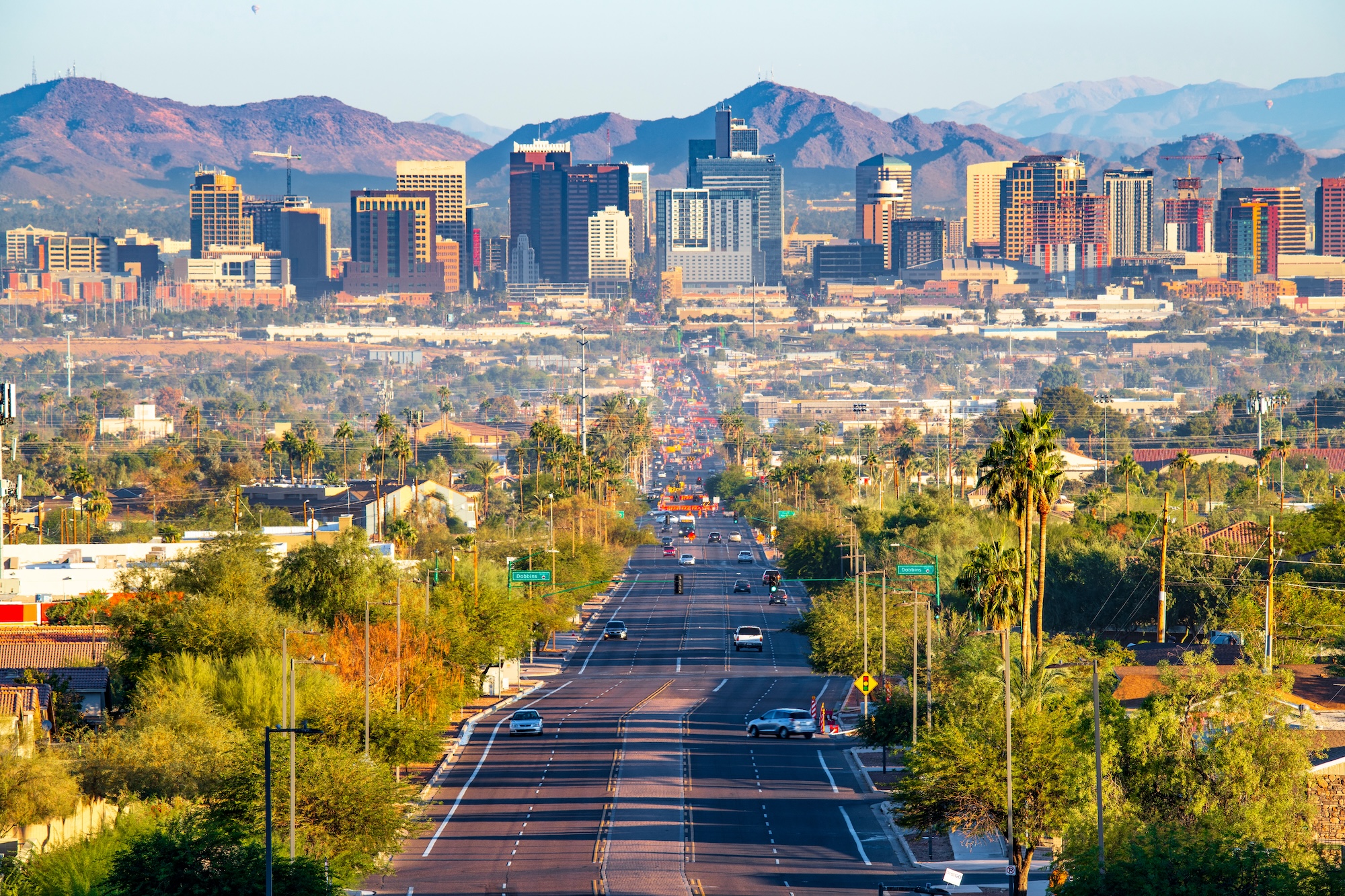Why does the fun have to stop when the sun goes down? For many waterparks, it doesn’t.
Operating late into the night not only generates revenue by extending the hours people can rent cabanas and buy food and merchandise, but it also can give guests an entirely new way to experience the park. Feet aren’t burning on pavement, there’s no need to slather on the SPF, and there’s an added thrill that comes with sliding under the night sky.
Plus, certain things just work better after dark. As Jim DeBerry puts it: “A juggling flame-thrower just isn’t going to work as well during the day.”
DeBerry is the general manager of Wild Waters Water Park in Central Florida. By day, it’s a quaint family-oriented attraction that pulls in visitors from the adjacent Silver Springs State Park, which is world renowned for its glass-bottom boats. By night, it’s a more festive affair, drawing both college-age crowds and retirees looking to get their nocturnal kicks.
“We give it more of a Jimmy Buffet, Caribbean feel,” DeBerry says. “It’s definitely a different atmosphere.”
The park’s Rockin’ Summer Nights programming includes headliners such as Chain Reaction, billed as the “ultimate Journey tribute band,” a magic show, tug-of-war contests and many more activities to keep guests wet and amused until 2 a.m.
Families thin out around sunset as young adults and moneyed VIPs trickle in. That trickle turns into a flood of thrill seekers who are plunking down serious cash on concessions. Cabana rentals are booked and the concierge service is hopping.
“These are individuals who are buying $100 bottles of champagne, whereas the people during the day are buying $20 meals,” DeBerry says. “The revenue stream at night is fantastic.”
While after-hours events can do wonders for a park’s bottom line, there are many things to consider before pulling an all-nighter. Here, AI explores the ins and outs of operating past sundown.
Light it up
In the interest of safety and spectacle, illumination is the first order of business.
Waterparks should at least have standard white lights to ensure guest safety, but to make the park a true nighttime venue, operators may have to invest in some pizzazz.
NRH20 in suburban Fort Worth, Texas wanted its new attraction, The Viper, to have a truly illuminating presence at the city-owned facility. The snaking inner-tube ride’s exterior lights up like a rock show, thanks to the technical expertise of Gemini Light, Sound and Video. Pulsing lights and sound effects create a disco-like atmosphere inside the 20-foot diameter tube.
Adding a sound and light show to a slide not only entices late-night ticket buyers, but also makes the facility a more attractive rental option for private parties. Obviously, budget will determine whether or not this is an option. To make costs more manageable, consider doing this with a new installation. It’s more cost-prohibitive to retrofit an existing slide, cautions Todd Graham, installation manager at Dallas-based Gemini Light, Sound and Video. Because The Viper was a new build, “we were able to have them lay specialized conduit for us that doesn’t co-mingle our stuff with power for other functions of the ride, such as pump equipment.”
A retrofit, on the other hand, might require breaking through concrete and tearing out landscaping to access power sources.
“That’s a lot more labor intensive,” Graham adds. “It’s easier to start with a blank slate.”
If giving a slide a phosphorescent makeover isn’t an option, there are lower-cost alternatives that can add spectacle at night. DeBerry says Wild Waters has had tremendous success with Rock the Bike. In this interactive challenge, two people pedal side by side on stationary bikes. The first player to fully illuminate an LED reader board wins. Another feature invites crowds to make some noise. Jumbo screens display decimeters and become brighter the louder people scream.
Of course, operators must adhere to state and local regulations concerning foot-candle requirements, not only within bodies of water but throughout all accessible conveyance areas, such as slide towers and walkways. In some cases, it may be necessary to bring in additional overhead lighting to meet code. Be sure these fixtures are off limits to guests and do not create a tripping hazard.
When designing a light scheme, also consider how the late-day sun and artificial light will affect a lifeguard’s ability to do his or her job. Harsh glare from lights or the setting sun can hinder scanning and surveillance patterns. One helpful practice may be to position the light source behind the guard, if possible.
To mitigate visibility problems, consider taking practice runs in advance of a one-off event or before a more regular after-hours program kicks off. Replicate the conditions as close as possible to assess if any changes should be made to the normal routine, suggests Michael Oostman, a managing partner with Innovative Attraction Management, a Windemere, Fla. firm specializing in aquatic risk prevention. Adjusting to glare patterns and other visibility issues may require a work-around, such as increasing lifeguards or changing their positions to adapt to the lighting conditions.
At the dive-in
To entice after-sundown stays — and keep registers ringing — some waterparks offer a cinematic experience under the stars.
Silver Dollar City’s White Water in Branson, Mo. shows family-friendly flicks on a 10-foot-wide LED monitor above a wave pool as part of its special Night Water programming. (Of course, the wave machine is off.) It’s a good way to drive concession sales. After all, who watches movies without candy and soda?
Just be sure to schedule showtimes when conditions are ideal.
“We decided to alter our starting time this year and move it a little bit back, because the sunset was glaring on the screen,” says Cory Roebuck, director of operations.
But this timing issue makes up only one part of the equation when managing light at such screenings. Operators also must consider how to balance the artificial light so it doesn’t detract from the evening’s entertainment but also won’t compromise a lifeguard’s ability to clearly see all guests.
“At White Water, we added two LED light fixtures [above the pool], which helped illuminate the water without causing screen glare for our guests or lifeguards,” Roebuck says.
Also consider this issue when choosing a screen. Some large LED monitors include a sensor that automatically brightens or dims the screen as needed, which is a helpful feature.
And certain movies tend to play better outdoors than others.
“We found that animated movies show a more vibrant color and are therefore easier to see on the large screen during twilight and evening hours,” Roebuck adds.
Speaking of entertainment, there’s no reason why popular daytime shows shouldn’t be part of the nighttime offerings. Wild Waters converted an underperforming splash pad into an open-air auditorium. It’s where magician/comedian Mark Robinson does his act three times a day, followed by an evening performance. “He said, ‘My day show is doing so well, I’d love an opportunity to pick up nights,’” DeBerry recalls. “Fortunately, it’s one of the most well-lit sections of the park.”
Night shift
It goes without saying, but a park after dark will need adequate staffing for the sake of guest safety.
When determining how many lifeguards and staffers to put on duty, operators need to anticipate how many guests will arrive, or stay, for evening entertainment. Forecasting nighttime attendance isn’t much different than it is for traffic during the day. Pre-ticket sales through the property’s website serve as a strong indicator, but by no means is this the only factor you need to consider. Coupon sites, such as Living Social and Groupon, will give an idea of how many potential redemptions to expect. Also take into account any tickets sold through vacation packages.
In time, historical data can serve as a reliable bellwether. For example, Silver Dollar City can anticipate that about 30 percent of guests will arrive after 5 p.m., a projection based on three years of attendance figures.
If live entertainment is part of the after-hours mix, that too should be considered. “If it’s a Tuesday, historically, attendance may be lighter if we don’t have a special entertainer,” DeBerry says.
Of course, many lifeguards will jump at the chance for more hours and will eagerly volunteer to work the night shift to pad their paychecks. To ensure guards are fresh and alert on the job, their hours must be monitored carefully.
This is especially true for nighttime events when lifeguards may have to contend with distractions such as fireworks, movies and concerts. It would be easy for a guard to lose focus and get caught up in these things. That’s why some operators will recruit only their most seasoned guards for special events.
Overnight success?
Of course, not every waterpark will be a nighttime hot spot. In markets where this kind of thing does well, the climate generally is still warm when the moon rises. They also usually are located within entertainment districts where visitors seek thrills 24 hours a day.
To determine if there is a demand for sliding under the stars, some facilities experiment with extended hours by keeping only a few attractions open. It’s a good way to test the waters, so to speak.
Night done right
Make sure your after-hours event goes off without a hitch with these helpful tips.
Raise the rent: On extended-hour days, consider adjusting costs of rentals to maximize revenue. For example, guests at Silver Dollar City’s White Water in Branson, Mo. pay $25 more for cabanas on Saturdays, when the park is open 10 a.m. to 10 p.m. But not everyone sticks around the full 12 hours. So night-time visitors are motivated with a discount to rent vacated cabanas after 5 p.m.
Midnight merch: Offer guests something they can’t buy during the day. “We have a whole line of products available after 5 p.m.,” says Cory Roebuck, White Water’s director of operations. These include glow-in-the-dark tchotchkes and exclusive Night Water T-shirts.
Partitioned park: If only a section of the property is open for a special event, use barricades and security personnel to keep guests out of restricted areas. “We absolutely need to make sure that there is someone or something that prevents those guests from getting into those closed-off sections of the park,” advises Michael Oostman, a managing partner with Innovative Attraction Management.
Night done (horribly) wrong
The Iowa Supreme Court recently ruled that a city’s failure to maintain proper lighting and water quality could constitute a criminal offense. The ruling stems from a 2010 case in which two teenage boys drowned during an after-hours event. The families of the boys are pursuing a negligent homicide charge, a misdemeanor.



